Centenarian Stephen J. Bolcar recalls WWII experiences
Seventy-five years ago today, the U.S. Army Air Forces launched “Mission No. 84″ – an ambitious deep penetration, double-strike mission against Germany’s aircraft and ball bearing industries. Employing 376 B-17 Flying Fortress heavy bombers of the Eighth Air Force, the mission had two primary targets: Regensburg, Austria and Schweinfurt, Germany.
Despite minimal coverage from escort fighters, which had far less range than the heavy bombers, the Regensburg raid was deemed a success. Schweinfurt was a different story, as the second strike force was delayed by three hours – giving the Luftwaffe plenty of time to refuel and rearm. At the end of the day, 60 heavy bombers were lost – their crews either killed or captured. Many more American bombers were damaged past the point of feasible repair. Historians have noted that the 60 aircraft lost on “Mission No. 84″ more than doubled the highest previous losses at that point of the war.
A second “knock-out” mission to Schweinfurt would be postponed until October 14, 1943 – ostensibly giving the Eighth Air Force time to rebuild its strength. But again, without having Allied fighter protection deep within German controlled airspace, the casualties that day were even worse than the Aug. 17 raid. Nearly 200 planes were destroyed or severely damaged on the second mission to Schweinfurt. Of the 2,900 crew members who went aloft, 650 men were lost.
In the wake of these two catastrophic missions, Air Force planners curtailed deep penetration strategic bombing for about five months. The Air Force grew during that rebuilding phase, bringing thousands of fresh bombers and replacement crews across the Atlantic to continue the fight against the Nazi regime.
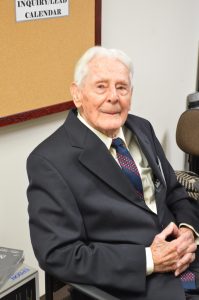
Stephen J. Bolcar – now 100 years young – remembers his three long years of training, and the eight missions he flew as a replacement with the Mighty Eighth Air Force. Assigned to the 702 Bomb Squadron of the 445 Bomb Group, Stephen was sent to England in 1944. With the 702nd, Stephen wound up as a gunner in a B-24 Liberator — something of a huge surprise, since he originally wanted to join the Navy.
“I grew up during the Depression. If you were making twenty bucks a week, you were on the top of the world. I said to myself, ‘Steve – you’ve got to get out of this town.’ So my friend, Tony, and I went to Newark to sign up for the Navy. I wanted to get on a battleship.
“Tony couldn’t get in, because he had broken his arm and could no longer extend it. I jumped up on the scale, and this doctor with epaulets on his shoulders said, ‘I’m sorry young man, but you’re three pounds underweight.’ They wouldn’t take me.
“I said to him, ‘Is that a fact, Sir? You see that sign out back there? It says: WE BUILD MEN! That sign is a liar!’
“He suggested I go around the corner, buy three bananas for a dime and drink three glasses of water. I didn’t want to hear that and I told him he was full of donkey dust! I never did get in the Navy!”
Some time later in 1941, Stephen joined the Army.
“I raised my hand up in the Trenton Armory, and they made me a private. This was six months before Pearl Harbor. They sent me from Fort Dix to Camp Croft in South Carolina. While I was there, my sister sent along a letter I had gotten from the Navy. The Navy finally wanted me, but of course, if I had left Camp Croft, I would have ended up in Leavenworth! I wish I still had that letter.
“After thirteen weeks of training, I was sent to Camp Everest in Massachusetts with the 26th Yankee Division. I was up there for two years, ‘til the beginning of 1943, when General Hap Arnold sent a communique saying he needed pilots, co-pilots, navigators, engineers and radio operators/forward gunners. I thought, ‘Why should I stay in the infantry and walk through the jungles in the South Pacific or all over Europe, when I can join the Air Corps and get paid fifty percent more for flying?’
“I was using my head!
“I took a test to be a pilot. They set me in a chair with a stick and two pedals, where you had to push the right pedal down while tilting the stick to the right to turn the plane right. I did what they asked, and they said ‘Thank You’. I never did hear anymore about that. In the meantime, I was sent to Newport, Arkansas, where I was leading exercises for men who, unbeknownst to me, would be in my crew.
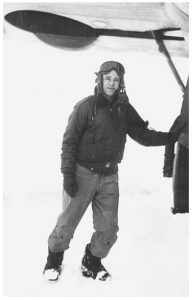
“I was finally sent back to Massachusetts – to Westover Field – where I met the pilot, co-pilot and others who would be in my B-24. We took our overseas training there. We went over on the Mauritania.”
Stephen arrived in Liverpool in September 1944 and was stationed at Tibenham – about 100 miles north of London.
“That’s the midlands – it’s in the middle of England – mostly farm lands, where all of the bomber and fighter bases were located. They already had a lot of planes over there, so we were replacement crews.
“I was in my barracks – up on the top bunk – when a fellow told me and the other guys who had just arrived, that they were going to Kassel, Germany in the morning. I knew my crew would not be flying this mission, because we came in as replacements, and the only way you would fly was if someone got killed and you took his place.
“My first 30 days in Tibenham were mostly uneventful. My pilot, Capt. Wilson, and everyone on his plane had completed 35 missions. He had ten men on his plane, and another plane with nine men were just waiting to be sent home.
“One morning, the crew chief from my plane woke me up – it was October 19th . I said, ‘George, what the hell are you waking me up for? I’m not scheduled to fly a mission.’ He said, ‘You want to see where your second mother came from in Ireland?’ I said ‘sure,’ but I turned over on my right side, faced the wall, and didn’t get up til quarter til ten.
“Well coming back from Greencastle, Ireland that day, somebody in one of those airplanes lit a cigarette and it blew up. There were 24 boys in that plane. If I had went with them that morning, I wouldn’t be here talking to you.”
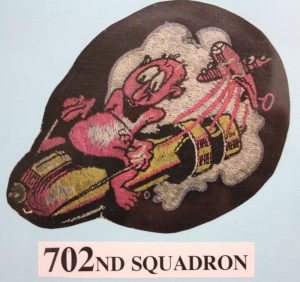
After two months of playing the Air Force waiting game, Steve’s name ended up in a pool of active replacements.
“On Dec 24, 1944, I was scheduled to go to Germany. Now, when I trained in Florida, I was underneath the airplane in something called the Sperry Ball. But when I got to England, I said to the crew chiefs on the line, ‘Where the hell is the Sperry Ball?’ He said, ‘Didn’t you hear? They took the Sperry Ball out, so you can carry two five-hundred pound bombs. That Sperry Ball weighs fifteen-hundred pounds!’
“Some years later, I met a guy who asked me if I was over Bastogne on Christmas Day (1944). I said I was. We were sent to drop food, medicine and ammunition. That day was very foggy in England, but our pilots knew what they were doing.”
Steve would fly a grand total of eight missions from Tibenham – far below the 35 missions required to complete a tour of duty. But his final mission earned him several scars for life, as well as a Purple Heart.
“They told us to watch the cowl around the engines, because sometimes when you take off, a small fire will break out as you are ascending. As you gain altitude, the fire will go out, but on this particular day, the fire wouldn’t go out.
“We were headed for the rendezvous point, looking for a green flare. As you get up there among the clouds, it looks like a wall of cotton balls. You’ve got to be careful with all of those planes ascending at the same time. Anyway, I hit my throat microphone – they have a different setup nowadays – and said, ‘Sir, the number three engine is on fire.’ So they told the pilot to shut it down. He was already trying to feather the number one engine, but he couldn’t get number three right – it was making too many revolutions per minute.
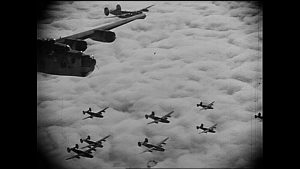
“We were about halfway across the English Channel on our way to France, when he decided to come back home. Somehow he managed.
“Did you ever play baseball? You know when you hit a home run, you go to first base, then second and so on. When we came to third base, I saw the runway and I blessed myself and said, ‘God, be with me.’
“We were coming down. The wheels were already down, and I’d say we were flying at about treetop level. He could have brought it in, but for some reason he elected to try to negotiate a turn, and we crashed. The only officer that survived that crash was the copilot and all he could remember was the pilot telling him to feather that number one engine.
“They teach you, when you’re about to crash, to face the front of the plane. I did, and when we crashed, it was like somebody hit me in the mouth. There was black smoke everywhere. I was in the waist of the plane, and there was another guy in the waist, named George Madigan. George had rivers of blood pouring down his face. I don’t know what he was thinking. His boot had come off, and he had his parachute harness on. The plane was basically cut in two, but the back of it was OK. He wanted to go into the back of the plane.
“I knew that there was something wrong with my eye, but I yelled to George, ‘You can’t go back there. There is smoke and we were carrying napalm. You might get burned.’ I pushed him out of the airplane window – for some reason they didn’t put them in that day – and they took him to Peterborough – about 30 miles away.
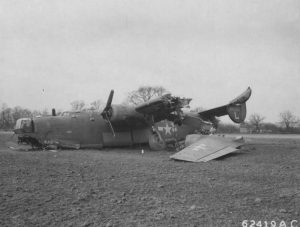
“I was sent to a makeshift first aid room. My commander was a surgeon from Pittsburgh, Pennsylvania, named Neil Bigh. I said, ‘Sir, am I going to loose my right eye?’ He said, ‘Don’t worry about that, and turned to the orderly and said, ‘Get that tray over there and that bottle of Schenley.
“He poured us a glass of whiskey, and I downed it; then he poured me another. He said, ‘How do you feel?’ and I said, ‘Sir, I never drank whiskey without some water or ginger ale in it.’ I asked him again, ‘What about my eye?’ and he said, ‘Don’t worry about that.’ Then he had the orderly bring the tray with a scalpel and some gauze and placed the gauze under my chin. The he started cutting on my face, and he was very good. I felt hot water on the wound as he was peeling back my skin.”
Steve’s surgeon was indeed a good one. The doctor probably saved Steve’s sight. Unfortunately, the commanding officer of the base left much to be desired.
“A colonel came in, and he was screaming, ‘Now you’re going to get a G–damned Purple Heart. I said, ‘Sir, you don’t have to give me a Purple Heart. Maybe if I get hit by a fighter or antiaircraft guns. But you’ve got a lot of nerve screaming at me after what I just went through.’
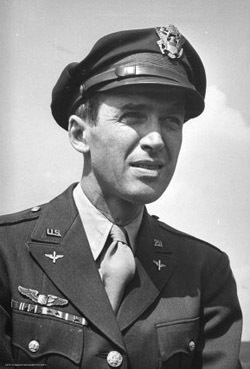
“He said, ‘When you get back, they’ll put your picture in the New York Times and the Washington Post.’ He was the worst commander they ever put in charge of officers. You know who took his place? Jimmy Stewart. Jimmy was a very good guy.
“The thing about flying is: you never knew if you were coming back. One shot into the gas tank, with 2,700 gallons of high-octane fuel, and you are done. But that crash was the reason I only flew eight missions. I had to tell my friends when I got home; and one guy – I wanted to punch him in the mouth. He said, ‘You only flew eight missions, and you were over there for eight months?’ But they sent me to a lot of schools, and my original crew was killed in that flight to Ireland.
“So I was a replacement. I could have been killed in training or on any one of those missions.
“In summation, let me tell you this:
“When I talk with kids in the 6th, 7th or 8th grade, they ask, ‘Mr. Bolcar, were you afraid?’ I say, ‘Yes, I was. Anyone who says they were in combat but they weren’t afraid, you tell them they weren’t there. Yes, you were afraid, because you didn’t know what would happen. Those Germans were excellent fighters.
“The people of America today don’t know what war is. War is the killing of human beings. We used to bomb the ports of Hamburg or Bremen. My grandparents and father and mother came from one of those ports to Ellis Island.
“I think about that every day.”
* * * * *
UPDATE: Stephen John Bolcar, a US Army Air Corps Veteran and Centenarian who lived a remarkable 101 years, took his final, peaceful flight on Wednesday, June 12, 2019. The entire staff of the Baltimore Post-Examiner once again wants to thank Stephen for his service, and extends our heartfelt condolences to all who knew and loved him.
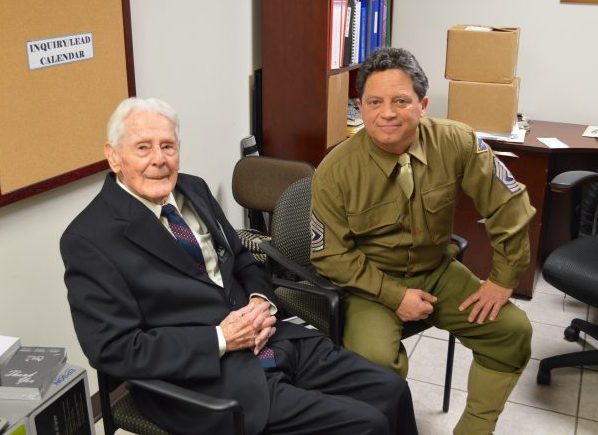

Anthony C. Hayes is an actor, author, raconteur, rapscallion and bon vivant. A one-time newsboy for the Evening Sun and professional presence at the Washington Herald, Tony’s poetry, photography, humor, and prose have also been featured in Smile, Hon, You’re in Baltimore!, Destination Maryland, Magic Octopus Magazine, Los Angeles Post-Examiner, Voice of Baltimore, SmartCEO, Alvarez Fiction, and Tales of Blood and Roses. If you notice that his work has been purloined, please let him know. As the Good Book says, “Thou shalt not steal.”

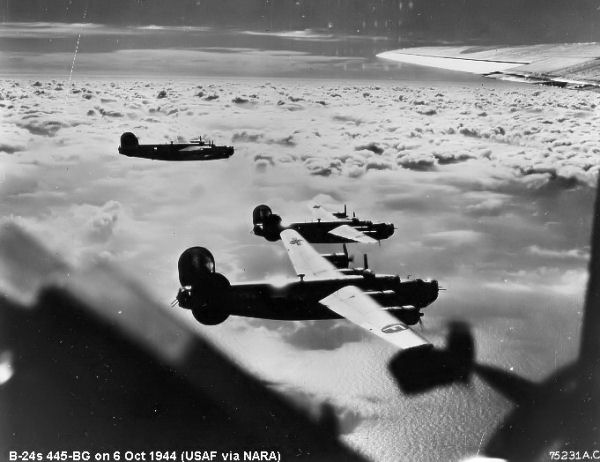
It was amazing for me to come across this article as my dad also served in the same unit at Tibenham during WWII, so I assume he knew Mr. Bolcar. It’s quite possible that I met him myself when I went to 2nd Air Division reunion in Baltimore with my parents around 2001. I know that my dad had some interactions with Jimmy Stewart. The story about the plane crash on the trip to Ireland is interesting because I am sure that my dad was referring to this incident when he told us that he was grateful to Budweiser since once he drank too much and was unable to fly and everyone on the plane was killed in a crash. Since he worked on the planes and didn’t fly missions, this would make sense. My dad also said he had an awful commander who was doing a lot of things he should be and was eventually replaced.